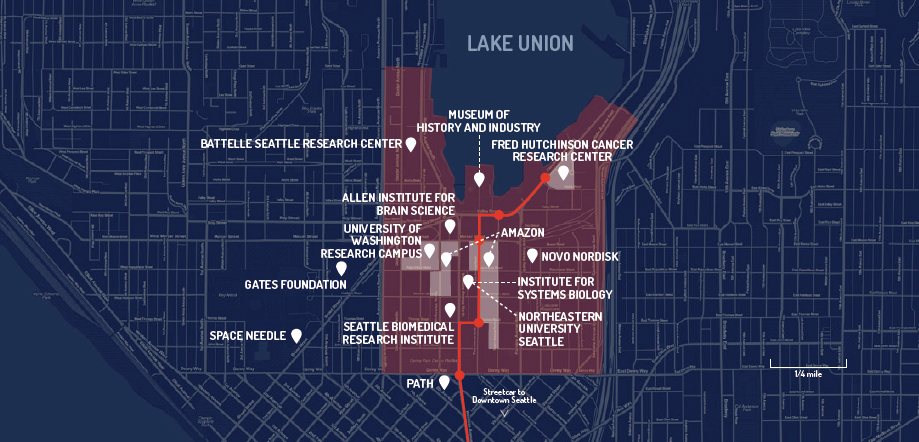Imagine a place where going to work means biking freely without the fear of cars to a coffee shop, where one collaborates with other people from nearby start-ups, research labs or universities. Sounds like a Portlandia episode? Truth is, a report released by the Brookings Institution’s Metropolitan Policy Program earlier this week states that such work environments are starting to emerge organically throughout the world – they’re called Innovation Districts.
These districts are defined as “geographic areas where anchor institutions and companies cluster and connect with small firms, startups, business incubators and accelerators.” Additionally, innovation districts are “physically compact, transit accessible, technically wired and offer a mix of housing, office and retail.”
Having a compact district where firms are near other firms, research labs and universities allows for “open innovation,” which is the sharing of ideas from “legal advice to sophisticated lab equipments.”
This environment, emerging particularly in the U.S. post Great Recession, is a far departure from the landscape of innovation that has dominated the past 50 years – suburban corridors of isolated corporate campuses, accessible mainly by car with little to no attention to integrating work, housing and recreation.
Here are six cities in the U.S. from East Coast to West Coast with areas that fit Brookings’ definition of Innovation District (and to learn more about each, take a look at Brookings' visually compelling report here):
1. Boston: Innovation District
2. Philadelphia: University City
3. Raleigh–Durham: Research Triangle Park
4. Detroit: Downtown, Midtown
5. St. Louis: Cortex
6. Seattle: South Lake Union
Related Stories
| Mar 21, 2013
Are charter schools killing private schools?
A recent post on Atlantic Cities highlights research by the U.S. Census Bureau's Stephanie Ewert that shows a correlation between the growth of charter schools and the decline in private school enrollment.
| Mar 20, 2013
Folding glass walls revitalize student center
Single-glazed storefronts in the student center at California’s West Valley College were replaced with aluminum-framed, thermally broken windows from NanaWall in a bronze finish that emulates the look of the original building.
| Mar 20, 2013
Architecture Billings Index up again in February
The American Institute of Architects reported the February ABI score was 54.9, up slightly from a mark of 54.2 in January. This score reflects a strong increase in demand for design services.
| Mar 18, 2013
Toyo Ito named 2013 Pritzker Architecture Prize recipient
Toyo Ito, a 71 year old architect whose architectural practice is based in Tokyo, Japan, will be the recipient of the 2013 Pritzker Architecture Prize.
| Mar 15, 2013
AIA opposes House bill cutting Eisenhower Memorial funding
AIA opposes House bill cutting Eisenhower Memorial funding.
| Mar 15, 2013
Singapore R&D campus takes top honor in Lab of Year competition
Singapore CREATE R&D campus takes top honor in Lab of Year competition, sponsored by R&D Magazine.
| Mar 15, 2013
7 most endangered buildings in Chicago
The Chicago Preservation Society released its annual list of the buildings at high risk for demolition.
| Mar 14, 2013
How to win more work from community colleges
The nation’s thousand-plus community college districts can be a steady source of income for your Building Team—provided you appreciate the special needs of this important sector of the higher education market.























